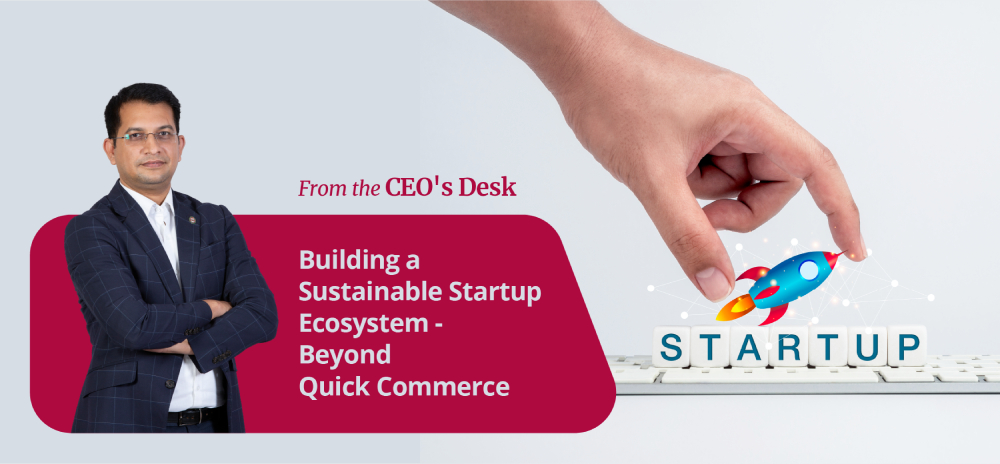
Building a Sustainable Startup Ecosystem - Beyond Quick Commerce
by Admin | IITBOMBAY-WU
Over the past decade, India's entrepreneurial landscape has undergone a remarkable transformation. The nation has emerged as a global hotspot for startups, with innovators harnessing technology and creativity to address diverse challenges. This surge is not merely a testament to the country's technical prowess but also reflects a deeper societal shift towards embracing innovation and risk-taking.
However, recent observations by Union Minister Piyush Goyal have sparked a crucial dialogue about the trajectory of our startup ecosystem. His remarks serve as a timely reminder to assess whether our focus is on sustainable, long-term value creation or merely on rapid, short-term gains.
This isn’t about dismissing operational excellence or logistics ingenuity. Rather, it’s a call to examine the value creation versus valuation debate. As stakeholders in the innovation economy, whether as educators, policymakers, or capital providers, it is important to steer the ecosystem towards long-term viability, not just short-term velocity
Redefining Impact and Innovation
Innovation today must go beyond convenience. It must align with India’s macroeconomic priorities. Whether it’s agritech platforms addressing food security, MedTech startups enhancing healthcare access, or cleantech ventures driving decarbonization, these are not just verticals; they are impact multipliers.
Founders need to think in terms of ecosystem orchestration, not just transactional disruption. Solving real-world frictions, particularly in underserved markets, requires resilience, stakeholder alignment, and policy symbiosis.
A Call for Full-Stack Entrepreneurship
What we need now is a new breed of entrepreneurs, full-stack leaders who can marry domain expertise with financial prudence and ethical foresight. The goal is not just venture-funded rockets, but mission-led enterprises.
Moreover, innovation doesn’t have to mean hyper-urban, VC-backed blitzscaling. Sometimes, sustainable growth lies in boring businesses with solid fundamentals. MSME tech, vernacular edtech, climate-resilient infrastructure, these may not make glamorous headlines, but they represent India’s biggest white spaces.
Aligning Capital with Consequence
Venture capital has played a catalytic role in India’s startup boom, but capital must now be more discerning. Investors are already shifting from vanity metrics to meaningful KPIs such as customer retention, CAC to LTV ratios, EBITDA margins, and governance standards.
It is time to reward business models that are not just scalable, but sustainable, ventures that create jobs, formalize supply chains, and build intellectual property.
Policy support should follow suit. Incentives and regulatory frameworks must be designed to promote problem-first innovation, especially in Bharat markets where digital penetration is still catching up.
The Role of Executive Education
Academic institutions must play a deeper role in shaping this next phase of entrepreneurship. It is about nurturing leaders who can think across functions and time horizons, individuals who drive innovation not only in their ventures but also within legacy enterprises, family businesses, and public institutions.
We instill a mindset of conscious capitalism, balancing shareholder value with stakeholder impact. Our message to future founders is simple: don’t just chase the exit, build for endurance. Ask yourself, is your startup solving for convenience or consequence?
Beyond the 10-Minute Narrative
Let us be clear, convenience is not a crime. But if we allow it to dominate our innovation narrative, we risk narrowing our collective ambition.
The next wave of Indian entrepreneurship must be built on more than speed. It must be built on substance, rooted in real needs, resilient models, and responsible leadership.
As we look ahead, let us not be distracted by who delivers the fastest. Let us focus instead on who delivers the most value, economically, socially, and systemically.
To our students, alumni, and partners, keep innovating. But build with intention. Build with perspective. Build not just for headlines, but for history.